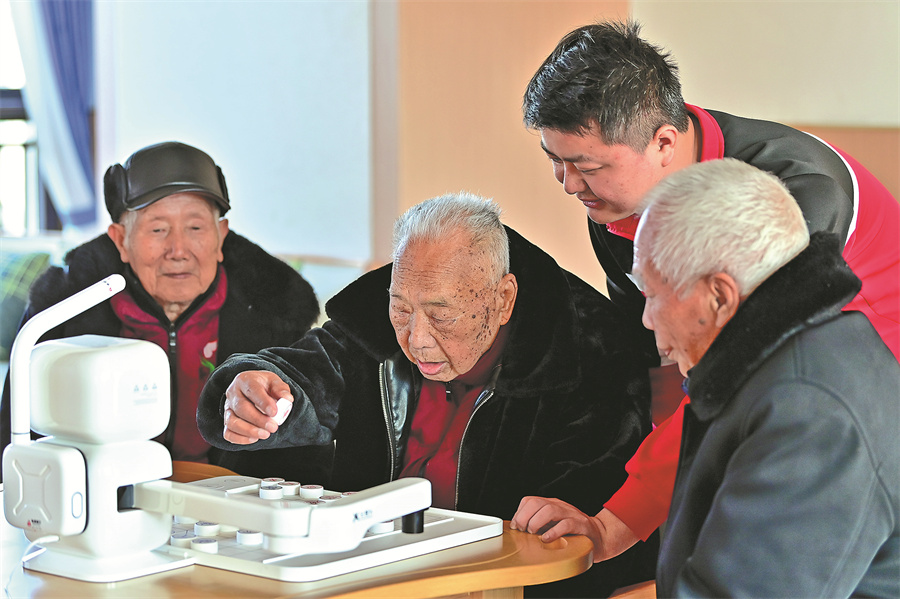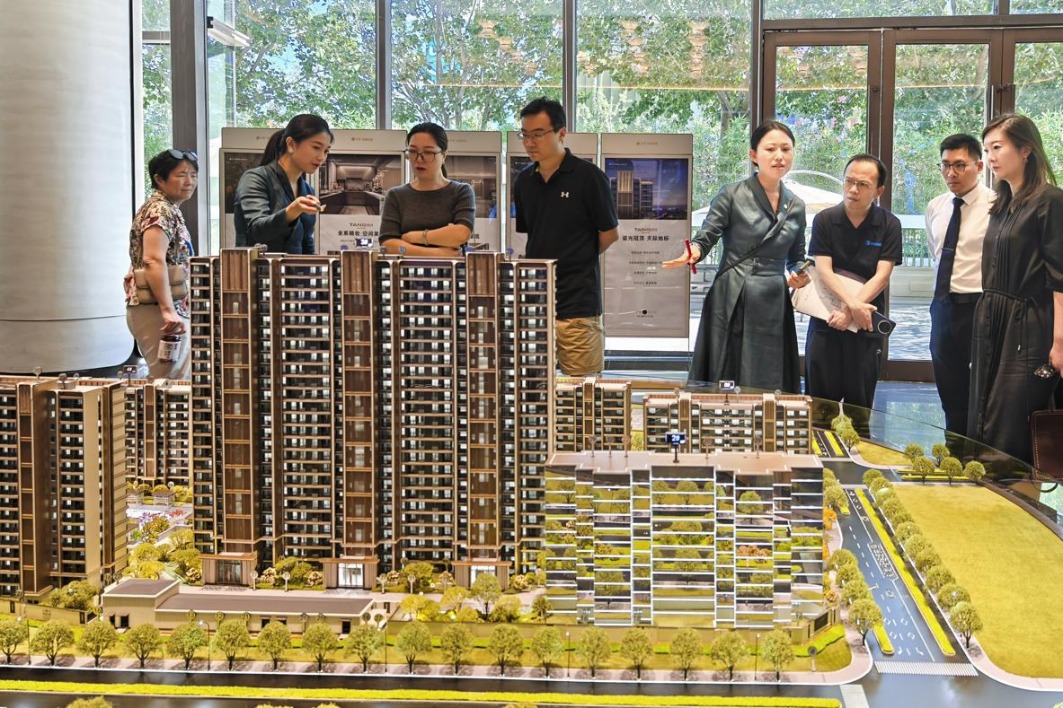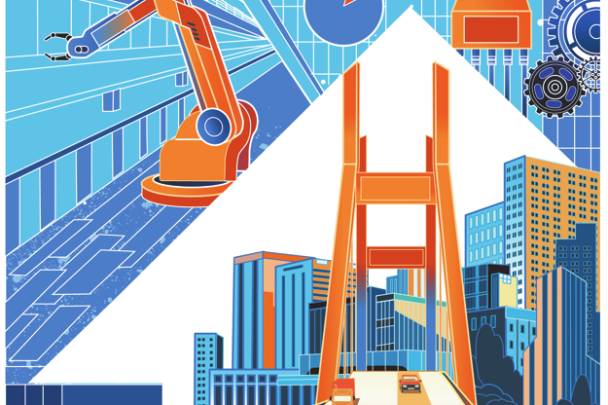Smart services should meet elderly people's needs


Artificial intelligence and the "silver economy" are at present two of the most dynamic and high-profile sectors in the Chinese economy. Both sectors have developed rapidly during the 14th Five-Year Plan (2021-25) period, yet their integration remains insufficient. With the rapid increase in the aging population, the 15th Five-Year Plan (2026-30) period will see the convergence of these two fields. It is thus necessary to not only adapt intelligent products to the needs of elderly people but also ensure that such products do not create obstacles in their daily lives.
Many elderly people find today's smart services alienating rather than enabling. On the demand side, elderly people's cohorts are shaped by lower purchasing power, different usage habits and distinct living environments. They have not kept pace with the rapid iteration of products and services and often see new features with distrust, confusion or fear. On the supply side, many internet and platform companies design products and services for youths: interfaces, update cycles and feature sets chase youthful aesthetics — vivid colors, dense menus and rapid rollouts for instance — which simply do not meet elderly people's needs.
Industry responses to the issue have been well-intentioned but modest. Enterprises have been largely pursuing two kinds of solutions. One preserves low-tech options: paper tickets, staffed counters, telephone hotlines and cash acceptance. The other is cosmetic: "senior zones", larger fonts, simpler color schemes and fewer pop-ups. Such measures are useful because they help reduce immediate friction, but they also impose costs of development, staffing and operations. For large enterprises this burden can be put under corporate social responsibility. But for many small and medium-sized enterprises and start-ups, it is more like a heavy burden than a competitive advantage.
Companies must rethink their logic and devise business models that make serving older adults profitable, not charitable. To achieve that, there is a need to shift attention beyond surface tweaks to how products serve elderly people's real needs.
Enlarged fonts, text-to-speech, fewer intrusive pop-ups and clearer input prompts are relatively easy to implement and deliver quick wins. Yet they matter because they remove immediate barriers to use. The problem arises when every provider adopts the same superficial fixes; in such a case differentiation disappears and the changes rarely open new revenue streams.
Elderly consumers use services differently: their priorities in online banking, mobility and everyday commerce are not the same as younger users'. Banks that designate frequently used transactions as a clear "senior zone" have shown how grouping common tasks can reduce friction.
Also, navigation services that focus on straightforward bus-route look-ups or a single-tap taxi to solve the "last 100 meters" problem can turn routine needs into compelling product offerings. Bundling such functionality into streamlined journeys would create opportunities for monetization through subscription tiers, partnerships with service providers, or convenience fees that consumers accept because they solve real problems.
The most important change is deeper, though. Product logic must align with older people's cognitive styles. Cognitive science suggests that, with age, people become better at drawing on accumulated knowledge but less comfortable resolving unfamiliar, novel problems. Many digital developments show younger users' exploratory, non-linear approach, and prove that layering a simplified interface over a fundamentally non-linear workflow merely masks confusion.
Genuine breakthroughs would come from reorganizing tasks into predictable, linear sequences or recasting complex features into familiar, step-by-step journeys. That kind of redesign is difficult and rare, but it is where defensible — and profitable — business models can be created.
The market reflects this gap. Products that address interface issues are common, those that deliver genuinely tailored functionality fewer, and offerings that embody age-friendly logic scarce. This is not an accident but the result of a long-standing supply-demand mismatch: enterprises have struggled to see effective demand from elderly users, who also struggle to find offerings that truly meet their needs. Many internet and AI firms, having long treated elderly cohorts as peripheral, now find this territory unfamiliar.
Yet change is already under way. An increase in the number of elderly internet users also means an increase in their digital presence across gaming, social media and short video platforms. The reversal captured by Pinduoduo's 2019 Singles Day quip — "My daughter once taught me how to shop on 11.11; now I teach my daughter how to group-buy" — showed that elderly users are active participants, not passive recipients. And their preferences will increasingly shape demand.
Profit and social value need not be treated as opposites. China's aging population problem is unfolding alongside its industrialization, informatization, urbanization and agricultural modernization. The synchronized nature of these shifts gives China's aging population problem distinctive contours and unique opportunities. Governments from central to local levels have already been according priority to closing the intergenerational digital divide by lowering communication fees, and making devices and training easily accessible. As these policy measures reduce barriers and more elderly people come online, the market for age-friendly intelligent services will expand.
What companies should do, therefore, is clear in principle though demanding in practice: moving beyond cosmetic fixes to taking measures to meet elderly people's core needs, ensuring products on predictable lines to match real cognitive habits. Those that embrace this approach will not only win customers but also build resilient businesses that turn population aging from a social challenge into a new frontier of innovation and growth.
The author is deputy director of the Pangoal Institution Ageing Society Studies Center.
The views don't necessarily reflect those of China Daily.
If you have a specific expertise, or would like to share your thought about our stories, then send us your writings at opinion@chinadaily.com.cn, and comment@chinadaily.com.cn.


































